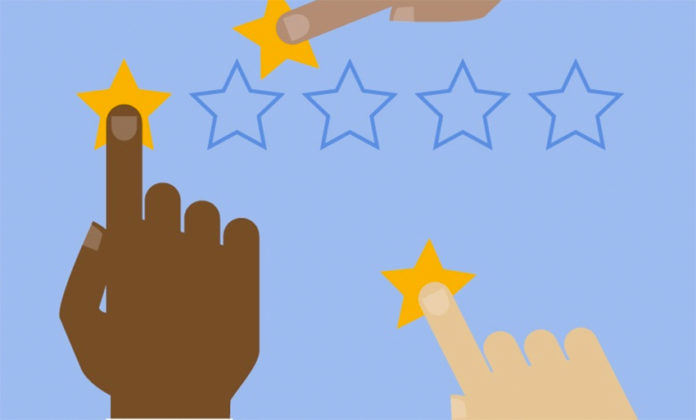We’ve all failed at work. Whether it was an awful first interview, failure to secure funding from an angel investor, or failure to close a sales deal, everyone has tasted bitter defeat. The best thing about failure? There is a lesson to be learned, making it preventable in the future. Failure is an especially difficult pill to swallow in the realm of the customer experience (CX). It can mean losing a customer or negatively affecting a company’s brand, making it much harder to overcome.
According to Helpscout, it takes twelve positive experiences to make up for one unresolved negative experience. The same article found that news of bad customer service reaches more thantwice as many ears as praise for good customer service. In addition, Zendesk found that a whopping 95% of customers share bad experiences with others. Ouch.
In a perfect world, the experience of every customer would be flawless, but that’s simply not realistic. Luckily, others have paved the way of failure, making mistakes that provide the rest of the business world valuable lessons to improve their CX and avoid from making the same error again.
Time Warner Woes
Time Warner Cable (TWC), one of the United States’ largest cable providers, has an enormous 24/7 customer service response team. In 2015, one of the unhappy members of their CX team had an unpleasant live chat experience with a customer. This rogue employee sent a letter out to [explicative] Martinez (which was the customer’s last name). Although TWC issued an apology and offered a free year of cable, the letter was posted on social media and went viral. That kind of negative press can’t be undone. Ms. Martinez also made a statement putting the onus on TWC, accusing them of hiring very rude and cruel people.
The Takeaway: A strong CX starts with loyal employees. Many of these employees have to deal with unhappy or angry customers for a long portion of their day. Keeping an open line of communication with the CX team and giving them constant gratitude will help to alleviate the stress of the job and prevent fails like TWC’s from happening. Good CX representatives are invaluable. RightNow found that 73% of consumers say friendly customer service reps can make them fall in love with a brand. Imagine what an unfriendly CX rep can do.
It only takes one rogue employee to tarnish a company’s reputation. Keeping the CX team happy must be a constant goal to prevent situations like TWC from happening.
W.T. Grant Giveaway
W.T. Grant, a leading retailer in the U.S. for over seventy years, came toppling down suddenly in 1977. In a desperate effort to earn more customers and increase cash flow, the retailer started issuing credit cards to anyone and everyone regardless of their credit history. In addition, store managers who failed to meet their quota of issuing credit cards were humiliated or fired. The result was a lot of consumers who couldn’t pay off their credit card bills, thus racking up 800 million dollars of bad debt for W.T. Grant–forcing them to close their doors for good. At the time, this was the second largest bankruptcy in U.S. History.
Takeaway: While the ‘customer experience’ was great for the customers who were able to get a credit card despite their credit history — the company sacrificed their own quality and values in order to gain customers. Companies can’t provide great customer experiences without a well-organized process that keeps them accountable. Desperation often leads a company to do drastic things, but sacrificing core values at the expense of retaining customers is a recipe for trouble.
United Airlines Breaks Guitars
In 2008, Canadian musician Dave Carroll, rode United Airlines while on tour. Upon arrival at Chicago O’Hare airport, Dave Caroll found his $3500 guitar to be damaged. When he showed three different employees at the airport, they all looked at him with indifference, refusing to show concern with the problem. For nine months he battled with the airline for compensation, to no avail. So he did what any singer would do: he wrote a song.
Dave Carroll wrote and performed a song called “United Airlines Breaks Guitars”, chronicling his unpleasant customer experience with the airline. He successively posted the video on YouTube. As of August 2015, the video amassed over 15 million views. For the four weeks following the video, United Airlines’ stock price fell 10%, costing stockholders $180,000,000 in value.
The Takeaway: Social media is becoming directly tied to the customer experience, and it can be very powerful. According to MarketingSherpa, United Airlines spent $43.9 million in advertising the same year, whereas the video posted by Carroll cost nothing. Imagine what United Airlines would have paid for to have a video go viral that had their company posted in a positive light?
Social Media tends to respond to failures more aggressively. No company is perfect. The best thing to do is learn from social media posters, as they are providing valuable customer intelligence to your organization. With this social media customer intelligence, you can improve the product and CX, reducing the likelihood of failures in your organization.
No matter how hard we work, mistakes are impossible to completely avoid. By being honest with your marketing promise, providing strong customer experience support, and vocalizing an effective value proposition, the risk of failure can be minimized. But when a bad customer experience strikes (and it will!), don’t hide it under a rug. Address it, learn from it, and take it as one stepping stone closer to success.





